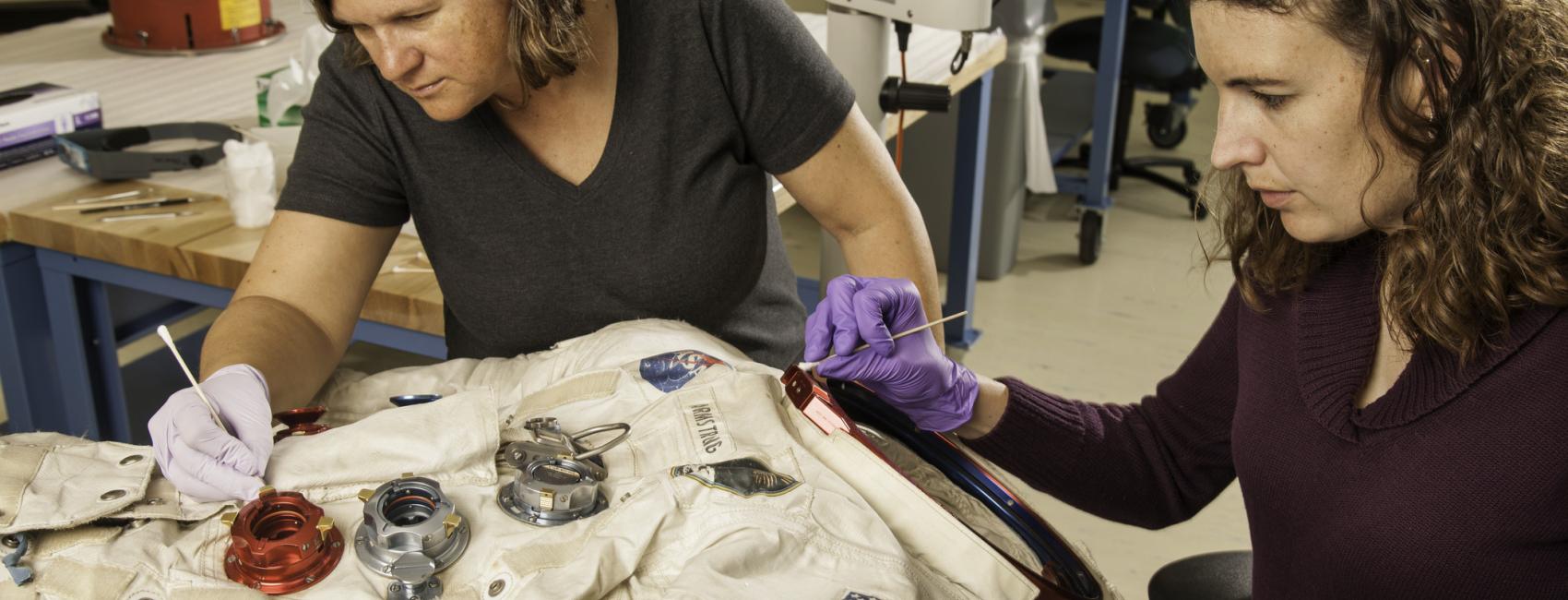
Dec 16, 2009
By Maria Banks is a post-doctoral fellow with the Center for Earth and Planetary Studies at the National Air and Space Museum.
More notes from the field in this follow-up to: "From Earth to Mars: Studying Climate Change in Antarctica"
Post-doctoral fellow Maria Banks standing in front of C-17 after landing on the sea ice at McMurdo Station.
To get to Antarctica, I first flew on commercial flights from Washington, D.C. to Christchurch, New Zealand. While in Christchurch, I picked up special gear for the cold and harsh conditions in Antarctica from the US Antarctic Program Clothing Distribution Center. Several days later, I boarded a C-17 plane bound for McMurdo Station, Antarctica. In November, the temperatures are still cold enough that the sea ice surrounding McMurdo is used as a runway for aircraft. As I first stepped off the plane in Antarctica onto that expansive sheet of snow-covered ice, I was greeted by a blast of icy air, biting wind, and an amazing view of Mt. Erebus, the southernmost historically active volcano. It was so beautiful, it almost took my breath away!
View from Observation Hill of McMurdo Station on Ross Island, Antarctica.
Over the following week at McMurdo Station, I completed several safety and survival training courses to prepare for my departure into the deep field. The most memorable of these courses was snowmobile training, in which we had to drive “ski doos” through an obstacle course on the sea ice, and Snow Craft I, also known as “Happy Camper School.” At happy camper school, we were taught techniques for keeping warming, dealing with emergencies such as frost bite and hypothermia, how to set up various types of tents in the snow, find a lost person in a white out (with white buckets on our heads!), build a snow wall out of snow bricks, and spend the night in a survival trench.
There are also many opportunities for interesting hikes surrounding McMurdo and field trips to explore some of the wonders of Antarctica. I was lucky enough that on a field trip to an ice cave, I was visited by several Adelie penguins. While people are not allowed to approach and disturb wildlife in Antarctica, the penguins can do whatever they like! These Adelie penguins were very curious and came within roughly five feet to check us out before tobogganing (sliding on their bellies) off across the sea ice.
Soon I will depart for our remote field site to begin work on the drilling project and start a different type of adventure. We will arrive at this site via a four to five hour flight on a C-130 plane with skis!

We rely on the generous support of donors, sponsors, members, and other benefactors to share the history and impact of aviation and spaceflight, educate the public, and inspire future generations. With your help, we can continue to preserve and safeguard the world’s most comprehensive collection of artifacts representing the great achievements of flight and space exploration.
We rely on the generous support of donors, sponsors, members, and other benefactors to share the history and impact of aviation and spaceflight, educate the public, and inspire future generations. With your help, we can continue to preserve and safeguard the world’s most comprehensive collection of artifacts representing the great achievements of flight and space exploration.